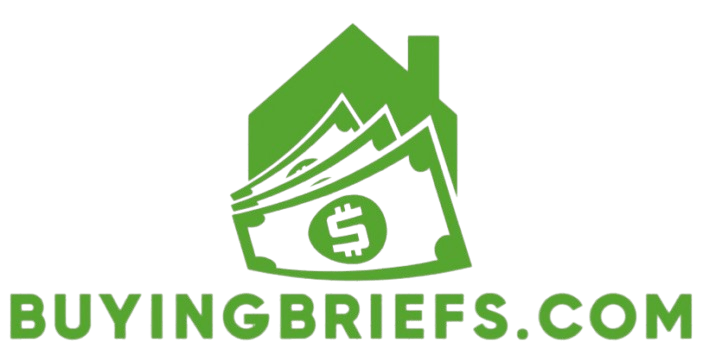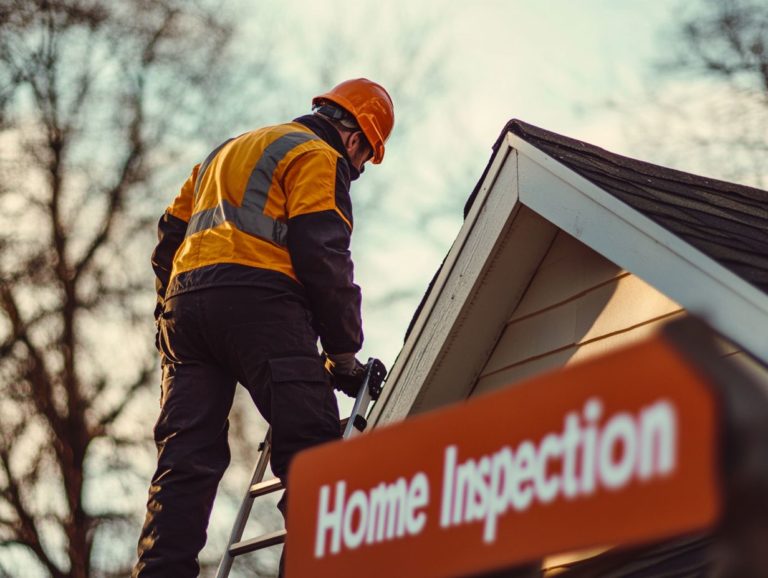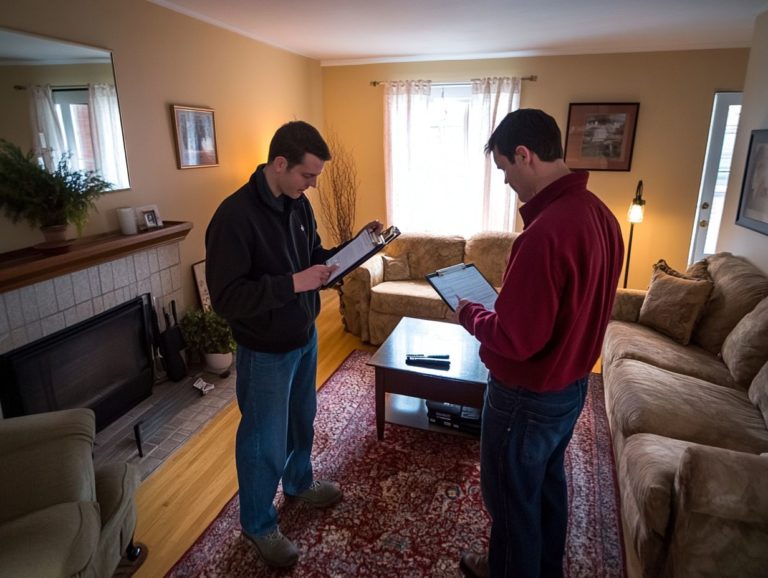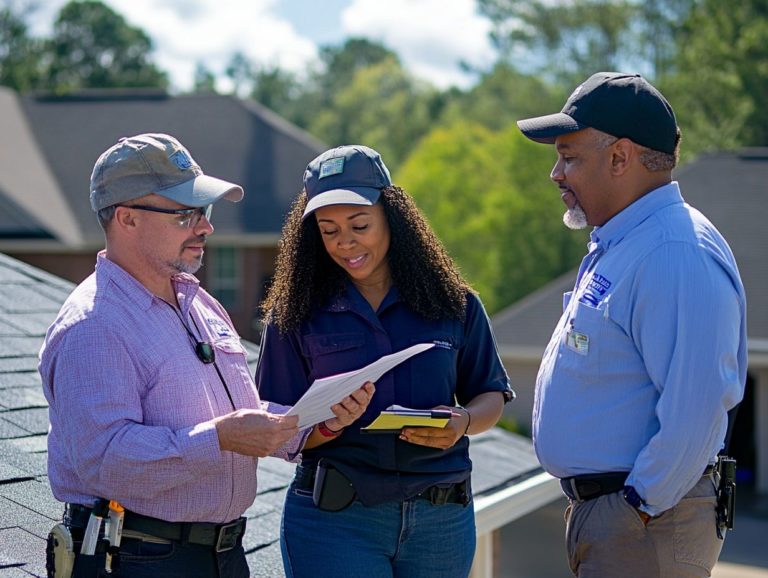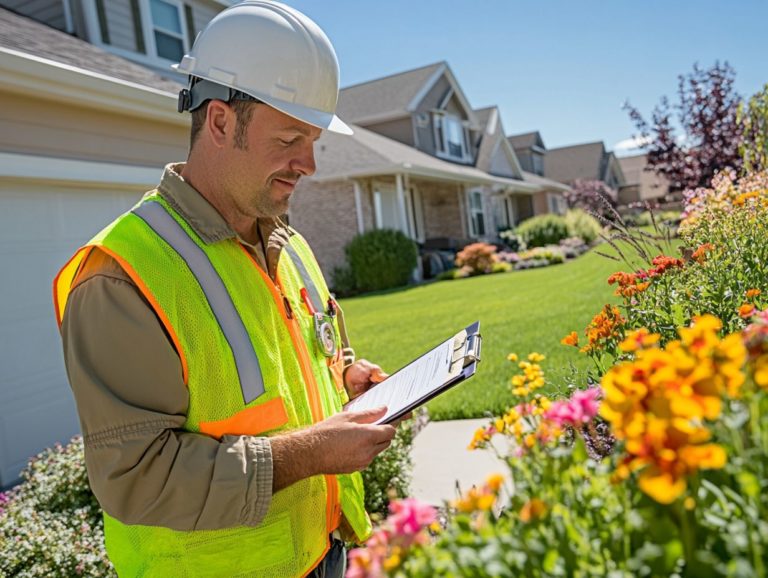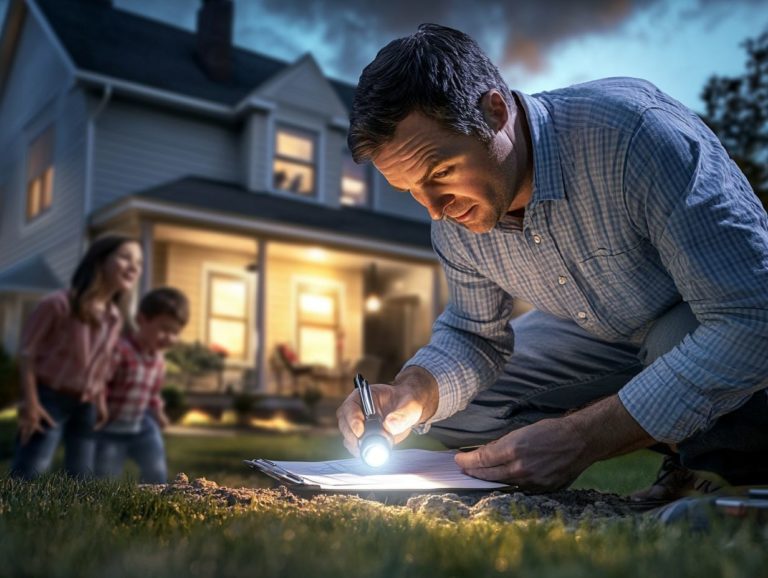Understanding Home Inspection Protocols
Buying a home stands as one of life s most significant investments, making a comprehensive home inspection essential for informed decision-making.
This article will guide you through the nuances of a home inspection, illuminating its purpose and importance in the purchasing journey. It will explore the diverse types of inspections available, provide you with preparatory steps, and clarify what you can expect during the inspection itself.
You ll discover how to interpret the inspection report, address any issues that may arise, and grasp the importance of follow-ups. By the end, you will feel empowered with the knowledge needed to navigate your home inspection with confidence.
Contents
- Key Takeaways:
- What is a Home Inspection?
- Types of Home Inspections
- Preparing for a Home Inspection
- What to Expect During a Home Inspection
- Interpreting the Inspection Report
- Addressing Issues Found in the Inspection
- Re-Inspection and Follow-Up
- Frequently Asked Questions
- What are the main factors to consider when understanding home inspection protocols?
- What is the purpose of a home inspection?
- Who typically conducts a home inspection?
- What are some common areas that are inspected during a home inspection?
- Are there any limitations to a home inspection?
- How long does a home inspection usually take?
Key Takeaways:
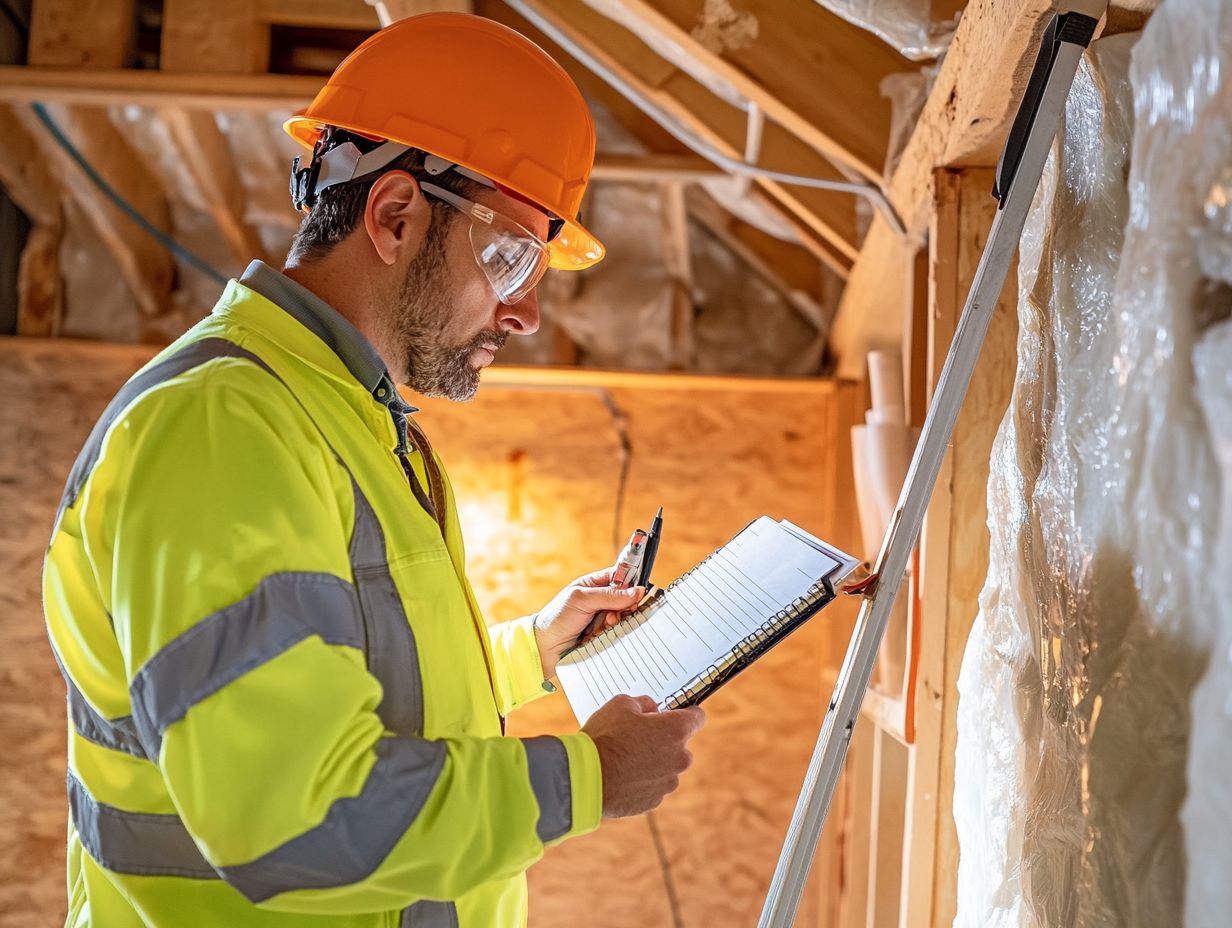
- A home inspection is a thorough evaluation of a property’s condition, providing valuable information to buyers and sellers.
- It can help identify potential issues and avoid unexpected expenses.
- There are different types of home inspections, including general, specialized, and pre-listing inspections. Each type serves a specific purpose and covers different areas of the property.
- Before a home inspection, it is important to prepare the property by making necessary repairs, decluttering, and providing access to all areas.
- During the inspection, expect a detailed examination of the property’s structure, systems, and components.
What is a Home Inspection?
A home inspection serves as a thorough assessment of a property’s physical structure, typically carried out by a qualified inspector. This understanding of the home inspection process aims to uncover any safety concerns or defects that could impact the home’s value.
As a potential homebuyer, you will likely depend on the inspection report generated from this evaluation to gain insights into the property’s condition before committing to significant financial responsibilities, such as mortgage closing costs.
Grasping the intricacies of what a home inspection involves is essential for making informed and wise investments in real estate.
Purpose and Importance
The purpose of a home inspection is to equip you with a clear picture of the property’s condition. This ensures you’re fully aware of any safety concerns that could affect your investment and overall property value.
A thorough evaluation is crucial for uncovering hidden issues, from structural weaknesses to hazardous materials, which may elude a less experienced eye.
When you receive an inspection report detailing these findings, you gain invaluable insights that can shape your purchasing decisions.
By understanding the potential costs of repairs or necessary renovations, you can negotiate with sellers more effectively. This helps ensure you don’t stretch your finances too thin.
Ultimately, a professional inspection serves as your safety net, empowering you with the knowledge needed to protect your investment. It instills the confidence to make informed, strategic choices in the competitive real estate market.
Types of Home Inspections
You ll find that there are various types of home inspections designed to address different facets of property evaluation. This ensures you gain a comprehensive understanding of the condition of your future home.
Each inspection type focuses on specific systems within the property, such as structural integrity, plumbing, electrical systems, and heating, ventilation, and air conditioning (HVAC).
This targeted approach helps to uncover any potential issues or necessary repairs, empowering you with the knowledge you need to make informed decisions.
Overview of Different Types
Home inspections can encompass a wide array of evaluations, including specialized assessments like radon testing, mold inspections, and even thermal imaging to gauge heat loss or gain.
These tailored evaluations ensure you are fully informed about your potential investment. Such assessments play a crucial role in protecting your investment by identifying potential hazards or costly repairs before you finalize your purchase.
For example, radon testing is vital for detecting dangerous gas levels that could pose serious health risks, while mold inspections reveal moisture-related issues that might lead to unsightly and harmful growth.
Thermal imaging inspections offer insights into energy efficiency and potential insulation problems, giving you a clearer picture of your future home’s condition.
These meticulously conducted evaluations not only provide peace of mind but also empower you to make informed decisions about your prospective property, potentially saving you both time and money in the long run.
Ready to protect your investment? Schedule your home inspection today!
Preparing for a Home Inspection
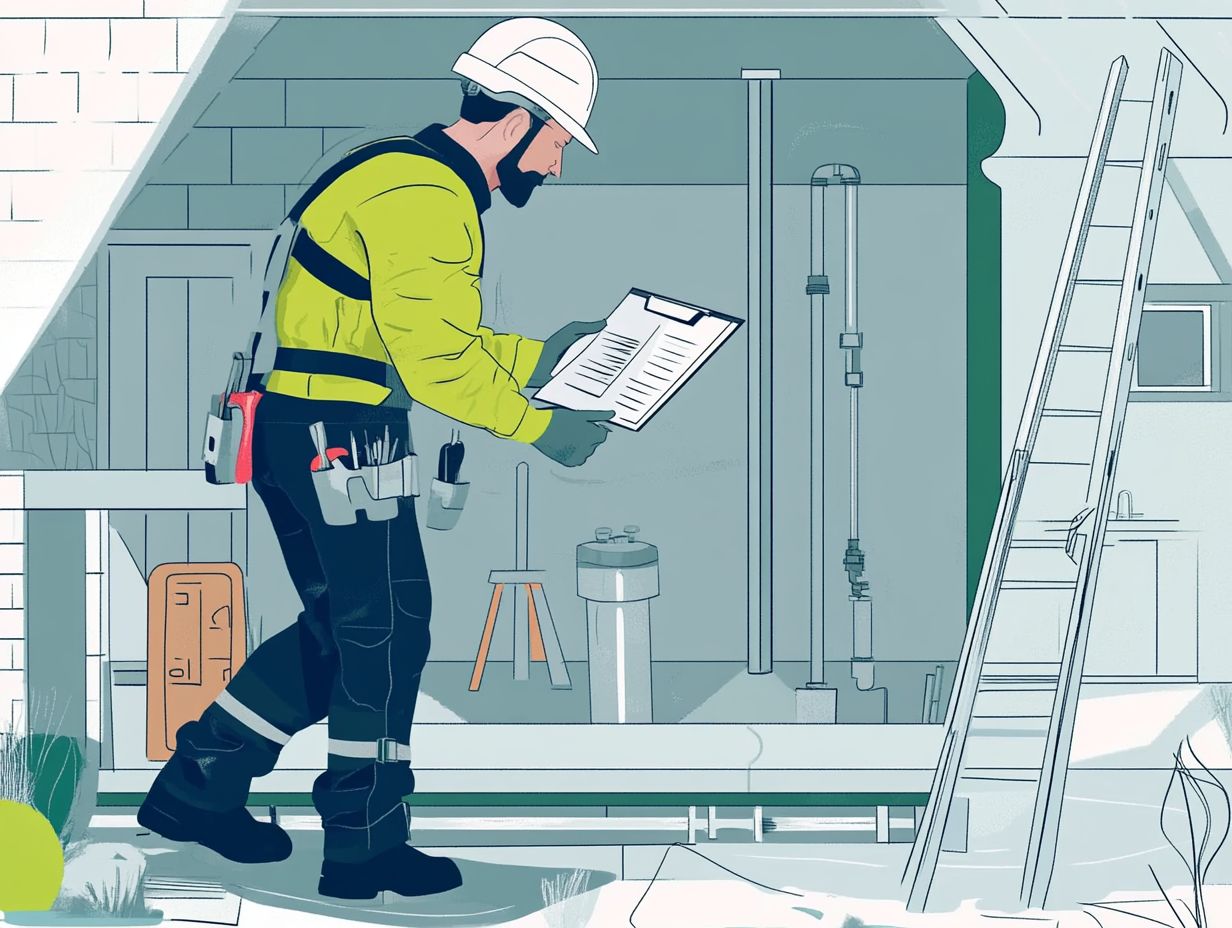
Preparing for a home inspection is crucial in the home buying journey. To ensure a smooth process, it’s helpful to refer to a comprehensive guide to understanding the home inspection process, allowing both you as the seller and the buyer to take proactive steps for a seamless inspection experience.
This involves crafting a detailed inspection checklist, addressing any potential safety issues, and clarifying which repairs may need your attention before the inspector arrives.
Taking these steps enhances the inspection process and fosters confidence and transparency between all parties involved.
Steps to Take Before the Inspection
Before the home inspection, you should set the stage for a smooth process. This includes preparing a comprehensive inspection checklist and understanding the process of home inspections, as well as addressing any known safety concerns.
First, ensure that all key areas attics, basements, and crawl spaces are easily accessible. This saves valuable time and helps avoid potential red flags during the inspection.
Don t underestimate the impact of minor repairs! Fixing leaky faucets or replacing burned-out light bulbs can significantly enhance your home s appeal.
As a buyer, it s wise to discuss specific concerns or questions with your agent beforehand. This will help you gain a thorough understanding of the property s condition.
By taking these steps, both you and the seller contribute to a more efficient and transparent home inspection experience.
What to Expect During a Home Inspection
During a home inspection, you can expect a careful check of the property’s essential systems and overall condition. This process provides invaluable insights into potential safety concerns and structural integrity, making it crucial to understand home inspection standards.
This comprehensive inspection process examines the home’s physical structure and helps provide a deeper understanding of the property’s strengths and weaknesses, including the home inspector’s role.
Process and Components
The home inspection process includes a thorough evaluation of various components of the property. Key areas include the foundation, roof, plumbing, electrical, and heating, ventilation, and air conditioning (HVAC) systems, all meticulously documented in the inspection report. For a deeper insight, consider understanding home inspection standards and practices.
These elements are essential, as they reveal the home’s structural integrity and functionality. Inspectors carefully assess the foundation for cracks or signs of settling that could signal serious issues.
The roof undergoes scrutiny for wear and potential leaks, which are vital for safeguarding the home against damage. Plumbing systems are examined for leaks and the condition of pipes.
Electrical systems are evaluated for safety and compliance with current codes. HVAC systems are also checked to ensure efficient heating and cooling.
These assessments give you a clear picture of the property’s condition and empower you to make informed decisions as a potential homeowner.
Interpreting the Inspection Report
Interpreting the inspection report is crucial don t delay! It allows you to grasp the findings and their implications for your potential investment, including necessary repair costs and how they may impact the overall property value.
A comprehensive report lays out any issues uncovered during the inspection, helping you make informed decisions about your purchase.
Understanding the Findings
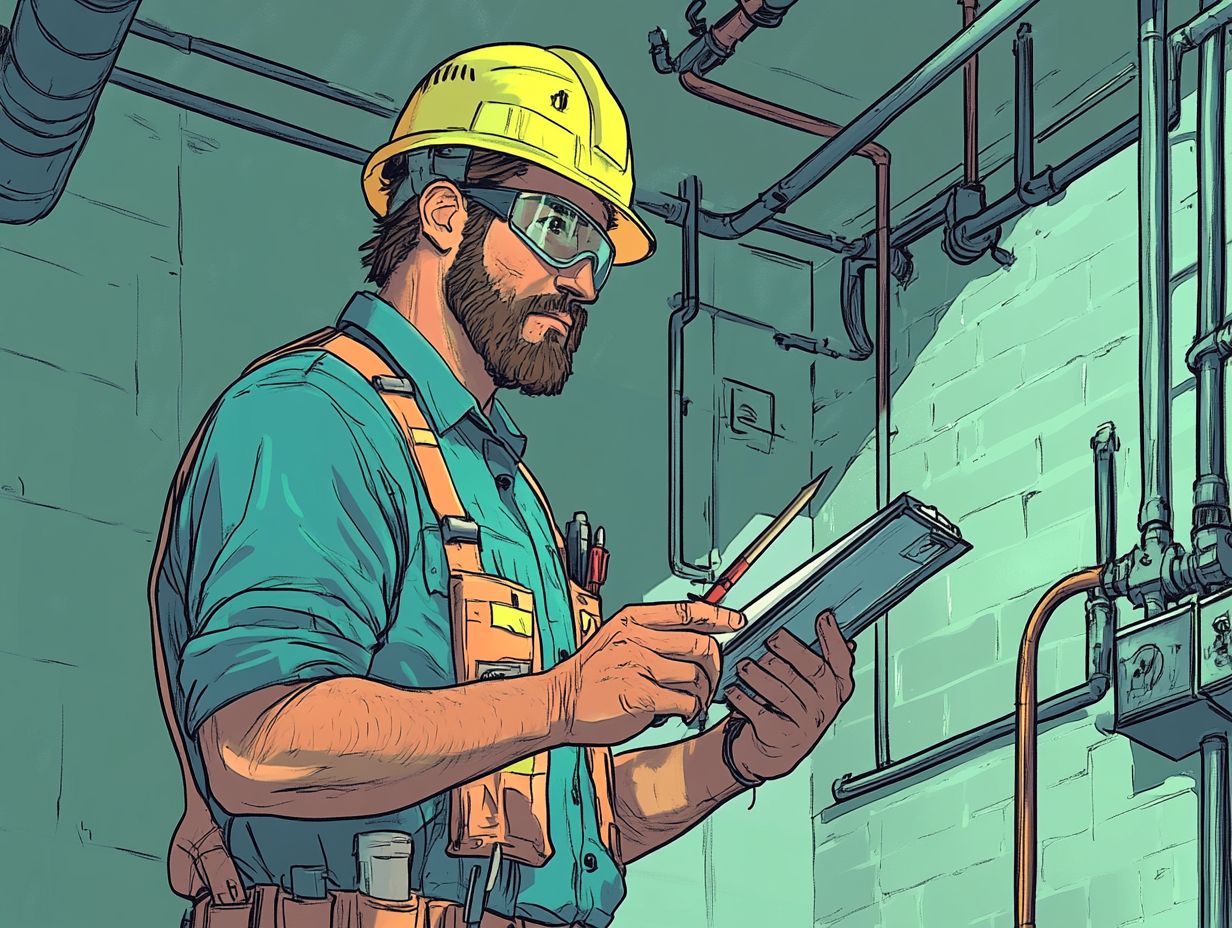
Understanding the findings in the inspection report is crucial for you as a home buyer. It sheds light on safety concerns, repair costs, and potential risks associated with the property.
These reports act as invaluable resources, arming you with information that can significantly sway your purchasing decisions. For example, structural issues can come with hefty repair bills and jeopardize the integrity of the home.
Meanwhile, electrical and plumbing problems might lead to immediate expenses and pose serious safety hazards.
Environmental concerns, such as mold or pest infestations, can affect your health and long-term livability. It s imperative for you to thoroughly evaluate these findings.
By carefully assessing the severity of each issue, you gain the ability to negotiate more favorable terms or even rethink your entire investment.
Addressing Issues Found in the Inspection
Addressing the issues highlighted in a home inspection report is crucial for you as a home buyer. It ensures that your investment remains solid while allowing you to manage repair costs efficiently.
You have several effective options at your disposal:
- Negotiate repairs directly with the seller
- Request financial concessions
- Consider a home warranty to help cover some of those repair expenses
Each choice gives you the power to safeguard your investment and navigate the complexities of homeownership with confidence.
Options for Dealing with Problems
When issues arise during a home inspection, you have several options for addressing them, including negotiating repair costs with the seller or leveraging a home warranty for added coverage.
Your first step should be to engage in a thoughtful discussion with the seller about the findings. This might involve requesting that they handle certain repairs or adjust the selling price to reflect the necessary work. You could also seek concessions to alleviate the financial strain of tackling these issues.
Alternatively, consider a home warranty as a safety net; it offers peace of mind by covering repairs for specific appliances and systems, helping you avoid unexpected expenses shortly after your purchase.
By understanding these options, you can confidently navigate the often intricate process of closing a deal, ensuring that you make informed decisions while safeguarding your investment.
Re-Inspection and Follow-Up
Re-inspection and follow-up are essential components of the home buying journey, particularly when significant issues have been uncovered during the initial inspection.
By hiring a professional inspector for a re-inspection, you can ensure that all repairs have been thoroughly addressed, providing you with peace of mind.
When and How to Re-Inspect
Knowing when and how to conduct a re-inspection is vital for you as a home buyer. This ensures that any previously identified issues have been adequately addressed and that the property meets your expectations.
Don t wait! Schedule a re-inspection as soon as possible, ideally about a week or two after the initial repairs are completed. This timeframe gives contractors enough time to tackle any concerns that arose during the first inspection.
During this follow-up visit, focus on the specific fixes noted in your initial report. Check that plumbing leaks have been repaired, that the electrical systems are functioning properly, and that any structural issues have been resolved.
To confirm that repairs were carried out correctly, detailed records from contractors like receipts and warranties can offer you peace of mind. A thorough visual inspection will help you catch any overlooked details, ensuring that the property is not just livable but also safe and sound.
Frequently Asked Questions
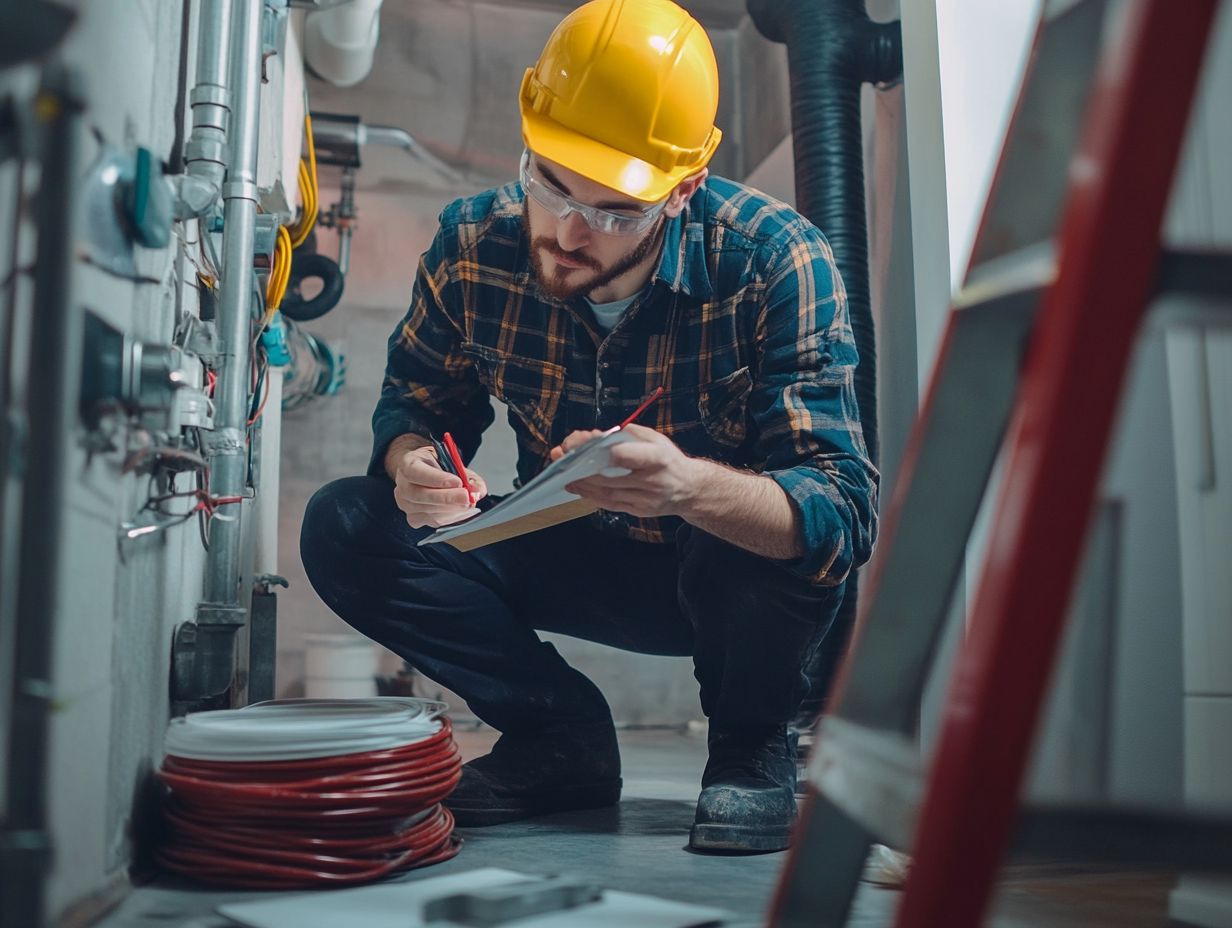
What are the main factors to consider when understanding home inspection protocols?
The main factors to consider when understanding home inspection protocols include the scope of the inspection, the qualifications of the inspector, the standards that the inspection follows, and any specific protocols that may be required by state or local regulations.
What is the purpose of a home inspection?
The purpose of a home inspection is to evaluate the overall condition of a home and identify any potential issues that may need to be addressed before buying or selling a property. Understanding the basics of home inspections also helps to ensure the safety and functionality of the home for future occupants.
Who typically conducts a home inspection?
A licensed home inspector with proper training and expertise is typically responsible for conducting a home inspection. They may work independently or be affiliated with a reputable inspection company.
What are some common areas that are inspected during a home inspection?
Some common areas that are inspected during a home inspection include the exterior and interior of the home, the roof, plumbing, electrical systems, HVAC systems, and structural components. The inspector may also check for the presence of pests, mold, and other potential hazards.
Ready to protect your investment? Start your inspection process today!
Are there any limitations to a home inspection?
Yes, a home inspection is a visual examination of accessible parts of the home. It does not use methods that damage the property, such as cutting into walls or digging up the foundation.
Also, it does not cover areas that are not visible or hard to access, like inside walls or underground pipes. Understanding these limits helps you know what to expect.
How long does a home inspection usually take?
The length of a home inspection varies based on the home’s size and condition. On average, it takes 2 to 4 hours to complete.
Larger or more complex homes may require additional time. Planning ahead can save you from surprises!
